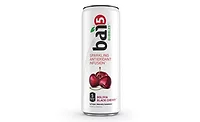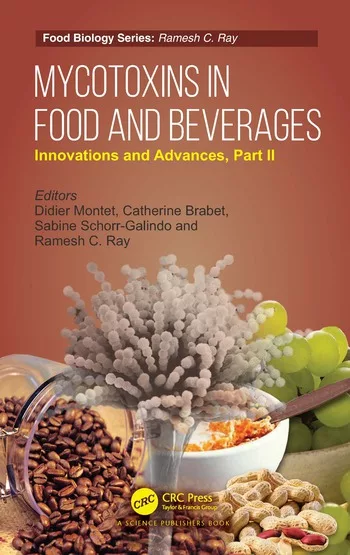Cinnamon touted for its versatility, functionality
Ingredient pairs with alcohol, non-alcohol beverages

Originally written and performed as a Christmas song, “Fruitcake” extols the virtues of cinnamon by proclaiming, “Cinnamon, cinnamon, don’t forget the cinnamon. Cloves and spice will make it nice, but don’t forget the cinnamon.” In addition to being a popular baking ingredient, cinnamon also is resonating as a popular flavor within more beverages, experts note.
In Beverage Industry’s 2016 New Product Development Outlook Survey published in January, 45 percent of survey respondents identified cinnamon and mint as popular non-fruit flavors. Looking forward, 10 percent of respondents named the spice ingredient as a top-selling flavor for 2016, tied with apple, coconut, grape, mint, orange, passion fruit and peach.
In fact, Comax Flavors named Cinnamon Graham as its flavor of the month in January. “This sweet brown flavor is available in natural, N&A and artificial formulas and water-soluble liquid, oil-soluble liquid and powder applications,” the company’s website states. “It can be used in non-alcoholic beverages and alcoholic beverages, hot chocolate, beverage syrups, baked goods, candies, nutritional bars and dairy and ice cream products.”
Experts note that cinnamon’s common and distinct flavor profile is recognized by consumers, and the versatile flavor blends well with other flavors, can mask offnotes in nutritional bases and can make plain flavors more indulgent. It also has verified health benefits, they add.
“As natural, health-and-wellness food products remain trending, companies have increased their utilization of spices, including cinnamon, as key flavoring components,” says Megan Trent, marketing coordinator at Gold Coast Ingredients, Commerce, Calif. “Just a small quantity of cinnamon adds [a] sweet, complex flavor that is naturally sourced, clean-label approved and has perceived health benefits.”
Angie Lantman, applications manager at Wauconda, Ill.-based Synergy Flavors Inc., notes that cinnamon can be an ideal flavor complement to numerous alcohol and non-alcohol beverages. “Cinnamon pairs well with the bitterness of coffee and tea, and it fits well with the ‘burn’ of many alcoholic beverages,” she says. “… It plays into the indulgence trend. ... This common spice works well in both alcoholic and non-alcoholic applications — everything from coffee creamers to protein drinks for non-alcohol and whiskey to creamy liqueurs for alcoholic beverages.”
In addition to these segments, cinnamon also has found a home in vodkas, rums, craft beers, hard ciders and mixed cocktails as well as in horchatas (rice milks), ciders, milkshakes, and protein- and dairy-based beverages, according to experts.
Additionally, cinnamon can be used as a stand-alone flavor or as a complementary flavor because of its ability to modify flavor and sweetness perception, they add.
“Cinnamon works with most fruits for a mulled cider-type profile and with any dairy flavor for a more indulgent profile. There are few flavors that cinnamon does not work with,” says Blake Wester, senior applications technologist at Flavorchem Corp., Downers Grove, Ill.
The versatility of cinnamon
Synergy Flavors’ Lantman adds that cinnamon’s versatility and healthful properties makes it a win-win for both consumers and beverage-makers. “Beverage-makers are using cinnamon both as a stand-alone flavor as well as blending it with other flavors,” she says. “It pairs well with apple, vanilla, other spice flavors, etc. It depends on the desired profile — sometimes it is the leading flavor and sometimes it is a background note.”
However, Gold Coast’s Trent notes that cinnamon primarily is used as a complementary flavor, rather than as a leading flavor. “Cinnamon pairs well with apple, banana, honey, vanilla, chocolate, caramel, blood orange, coffee, pear, pomegranate and mint flavors,” she says.
Yet, the challenges of formulating with cinnamon include finding the correct usage level to combat its strong flavor, possible sedimentation effects and an undesirable mouthfeel. “If actual ground cinnamon is used, then gums will have to be incorporated to keep it suspended,” Flavorchem’s Wester says.
Additionally, Lantman notes that using cinnamon-related flavors instead of the real ingredient can help. “As long as the right flavors are chosen for the type of beverage application, there should not be challenges formulating with cinnamon flavors,” she says.
Experts note that brand owners looking for a palatable, naturally sourced, clean-label flavoring ingredient are turning to cinnamon. “Consumers continue to demand less-processed foods and beverages with fewer additives, and cinnamon fits the bill,” Gold Coast's Trent says.
Synergy Flavors’ Lantman predicts continued growth for cinnamon flavors. “It can bring out desirable characteristics in many beverages,” she says. “For example, as consumers purchase more protein drinks and more breakfast-on-the-go-type products, we will see this category grow.
“Although vanilla, chocolate and strawberry will continue to dominate the protein segment, consumers are looking for more variety,” she continues. “Cinnamon fits well into this category.” BI
Looking for a reprint of this article?
From high-res PDFs to custom plaques, order your copy today!







